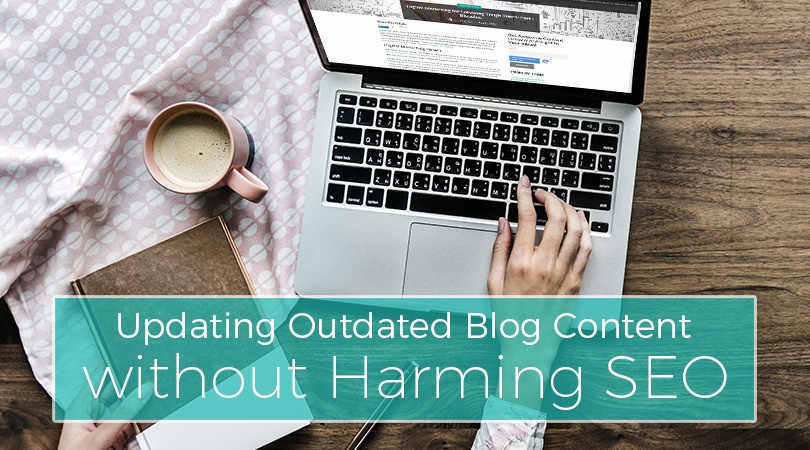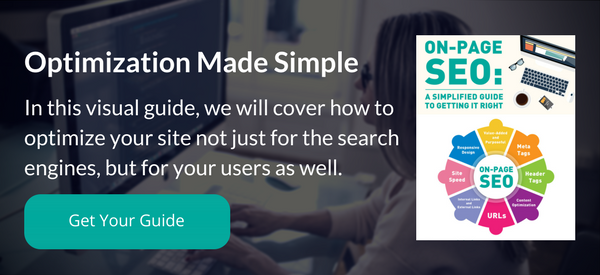
With all the hard work that goes into creating excellent blog content, it’s important to make sure your posts are relevant for as long as possible. Creating evergreen content is one way to make sure your content stays relevant, but sometimes it’s helpful for SEO to have a post that highlights something happening at the moment.
For example, this blog article title is Updating Outdated Blog Content without Harming SEO. But I could choose Updating Outdated Blog Content in 2019 or Top Tips to Update SEO Content in 2019. While either article title is a great choice for the next several months, eventually the title will become irrelevant as the year ends. Someone searching for information in 2020 will see the title and may determine the information is out of date.
There are other reasons a blog article becomes irrelevant. Using this article subject as an example, SEO strategies shift as Google algorithms are updated. There is also a lot of bad SEO advice out there so it’s possible someone will realize the SEO strategies they once believed were helpful are no longer wise to suggest.
Whatever the reason, when the time comes to update expired blog content it’s vital you do so without harming your SEO. There are several actions you can take to update your blog content and make sure potential customers will want to read and engage with it and keep Google happy.
Here are 5 Tips to Update Blog Content without Harming SEO
Start with the Content
Review your content and highlight the areas that need updating. Confirm the internal and external links you’ve included are live. You may want to also consider swapping them out for content that is more up to date. Both internal and external links need to connect relevant content within the context of your blog subject. It’s very likely that new articles have been published on the same subject.
After you’ve updated all the details, make a note at the top or bottom of your post stating the date you’ve updated the content. This provides transparency and also tells the reader that you are paying attention to your content and working to keep your information current and relevant.
Keywords
After you have updated your content you will want to take a minute to evaluate your keywords and make sure they are still the best choice for your blog. To follow SEO best practices, include relevant keywords in your blog post title, meta description, and the content of your article.
Of course, you need to avoid keyword stuffing, but if you previously chose a short-tail keyword consider adjusting to a long-tail keyword phrase instead. Short-tail phrases such as pizza store, grocery store, or baseball game are helpful for context but are used with thousands of blog articles. By using a longer phrase with more specific wording you will connect with a local audience. For example, if you use the keywords pizza store in Tampa FL or grocery store in Illinois you increase the chances of finding customers who will utilize your company.
Title Tags and Meta Descriptions
Meta Descriptions and Title Tags are an important way to help Google understand what your website is about. When Google understands your website subject it will queue in the right search queries and draw the right readers to your content.
You will also want to check that the character counts on your title tags and meta descriptions are in compliance with Google’s current limits.
Update Images
First, check to make sure your images are optimized. You may consider adding keywords that identify a location or the type of business you own. An image of a building with an Alt Tag that includes commercial property Central, FL will help your blog article rank higher in search for Local SEO.
Pinterest continues to grow in popularity as a search engine with over 200,000 million active monthly users. Optimal Pinterest images are 2:3, or 600×900 pixels. While square images work, vertical pins work better because you’re getting more space in the Pinterest search feed. Adding a Pinterest image to a blog post will encourage people to pin the article. Not only will this provide an additional search engine opportunity, but you may connect with a whole new audience.
Another image opportunity you may consider is an infographic. If your article has a lot of quotes or statistics an infographic will allow people to review the content in a concise way. Infographics are eye-catching on social media and tend to have high engagement and shares.
Add Video
If your post is instructional, a how-to video is a great addition. Depending on people’s learning style a video may help someone understand a concept easier than reading lengthy instructions. YouTube is the second largest search engine after Google. Adding a video on YouTube and embedding it on your website increases search options.
Also consider using a program like Lumen5 to make a video featuring the highlights of your post at the bottom of your blog article. Video is a great way to add interest to your website and also has the potential to keep a blog reader on your web page longer and lower your bounce rate.
Do you need help improving your website SEO? At SMA Marketing we are experts in SEO Strategy. We believe that every business needs a unique plan and work directly with our clients to help them set and achieve their marketing goals. Ready to learn more about how we can help you improve your blog content without harming SEO? Start by downloading our On-Page SEO guide.
